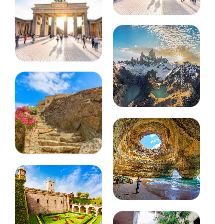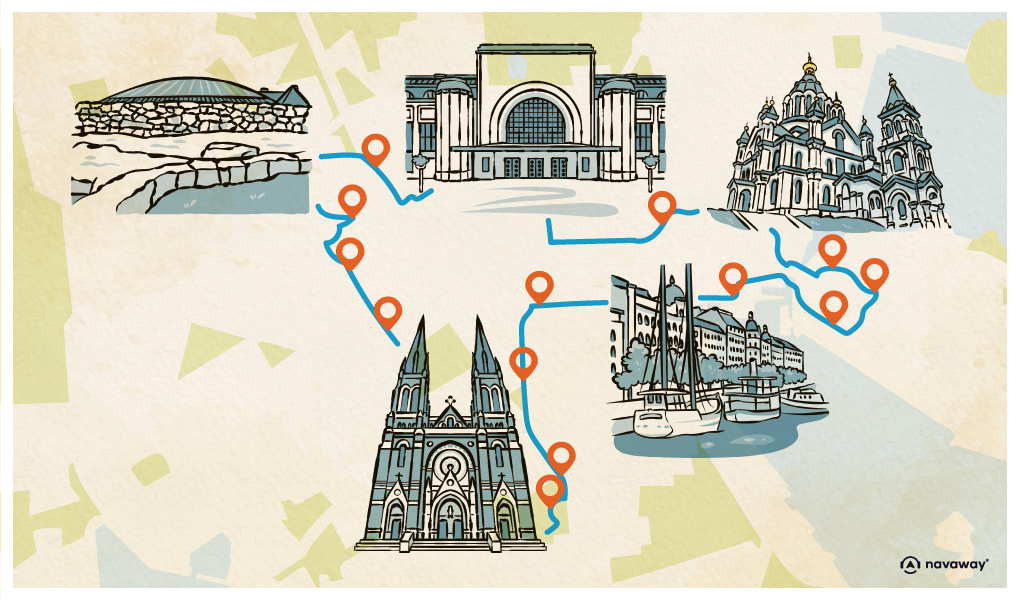
From Lapland to Helsinki: discover Finland’s 4 regions
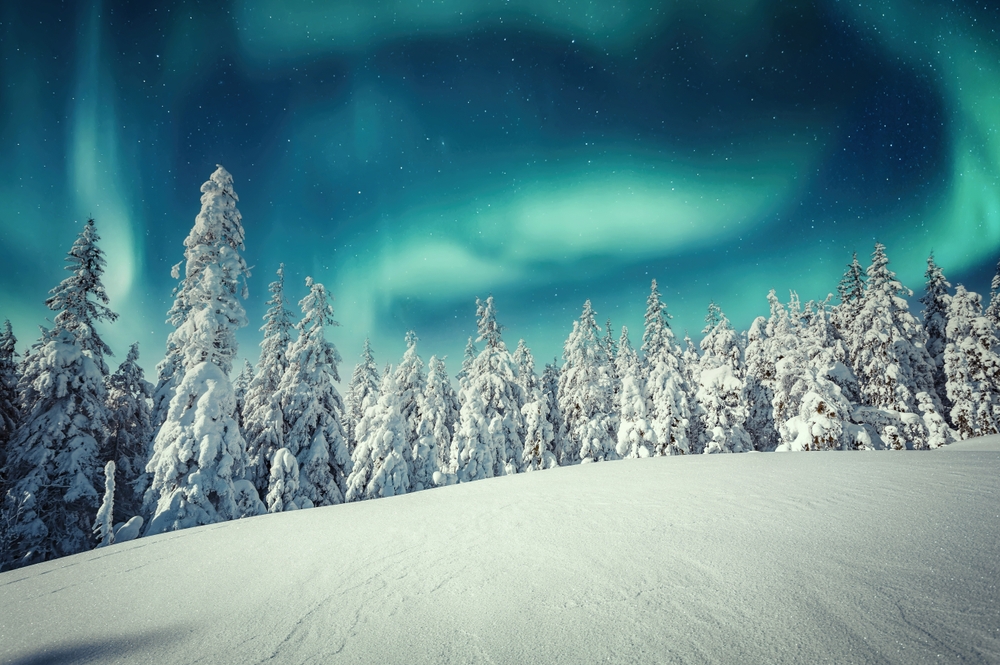
Finland, nicknamed the “Land of a Thousand Lakes”, reveals strikingly beautiful landscapes across its four distinct regions. From mysterious Lapland with its glittering Northern Lights to Helsinki, the dynamic capital with its Nordic influences, this Scandinavian nation offers exceptional diversity. Between the vast expanses of lakes, the wild coasts of the Baltic archipelago and the endless boreal forests, each Finnish region tells a unique story. Discover how these contrasting territories form a harmonious whole, where modernity and ancestral traditions coexist in perfect symbiosis.

1. Lapland: the kingdom of the northern lights and the midnight sun
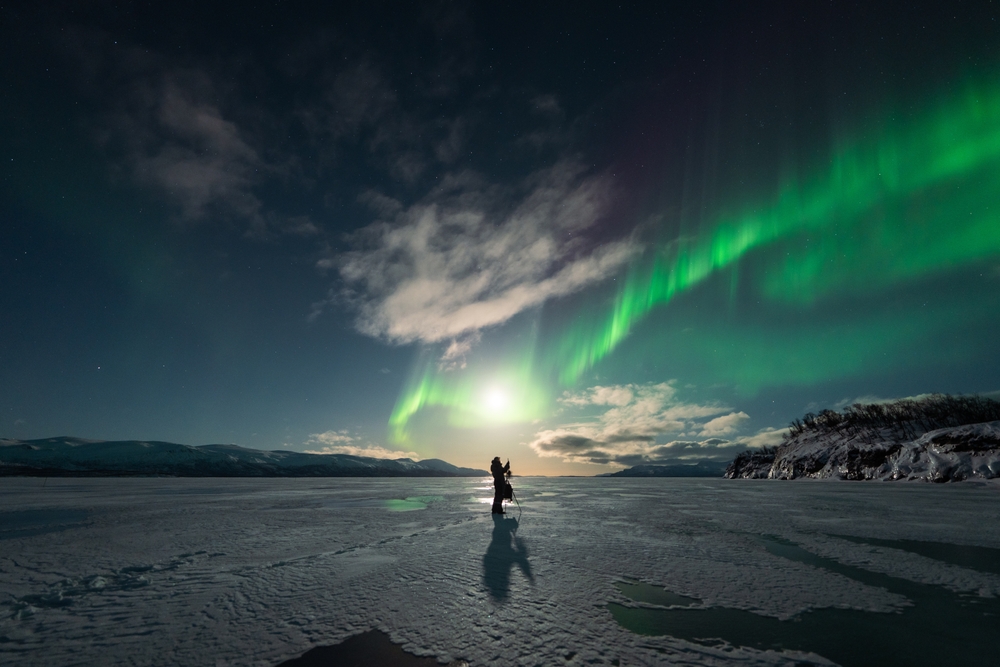
Finnish Lapland stretches majestically beyond the Arctic Circle, offering experiences that are unique in the world. This northern region fascinates with its striking contrasts: the polar darkness of winter gives way to the midnight sun of summer, creating magical atmospheres according to the season.
Also read the Helsinki guide:
- Top 10 culinary specialities in Helsinki
- Top 6 things to do in Helsinki
- What are the best hotels in Helsinki?
Rovaniemi: capital of Lapland and Santa’s village
Rovaniemi, the jewel of this region of Finland, embodies the Lappish spirit in all its splendour. The town is home to the famous Father Christmas Village, a magical destination where the magic of Christmas happens all year round. Here, visitors can meet the legendary figure, cross the Arctic Circle in a symbolic ceremony and experience the unique atmosphere of Santa’s post office.
The capital of Lapland also has a number of museums dedicated to the Sami culture, the region’s indigenous people. The Arktikum museum reveals the secrets of the Arctic, while local cultural centres offer visitors the chance to discover traditional crafts, including woodcarving and silver jewellery.
Northern lights and exceptional winter activities
From September to April, Lapland offers ideal conditions for observing the Northern Lights. These extraordinary light phenomena adorn the night sky with mysterious colours, mainly green, but sometimes red, yellow or violet depending on the altitude of the solar particles. The best observation spots are far from light pollution, in the vast, deserted expanses of the tundra.
Winter transforms this Finnish region into a grandiose playground for Nordic activities. Dog-sledding offers an authentic experience through snow-covered forests, while snowshoe trekking lets you explore the silent trails. The more adventurous opt for snowmobiles, the preferred means of transport for locals to cover the distances of these immense territories.
Same culture and ancestral traditions
The Saami culture, with its age-old traditions, is deeply rooted in the identity of this region of Finland. Reindeer herding remains the emblematic activity of this people, perpetuating skills handed down from generation to generation. Visitors can take part in reindeer safaris and discover ancestral herding techniques.
Inari, considered to be the spiritual heart of the Sami homeland, is home to the Siida museum, which traces the history and traditions of this Arctic people. The town also offers the chance to meet local craftsmen specialising in leatherwork, traditional clothing and reindeer antler carving.
2. The Great Lakes region: the aquatic heart of Finland
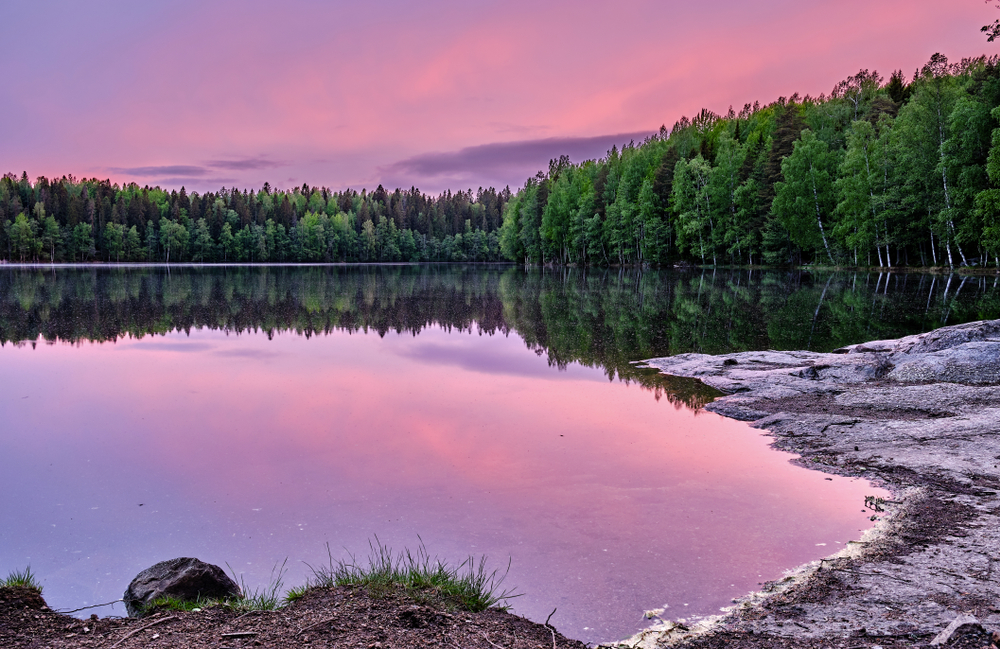
The Great Lakes region, a veritable aquatic labyrinth, contains the majority of Finland’s 188,000 lakes. This geographical area stretches across the centre and east of the country, creating a landscape that is unique in Europe, where water forms infinite shapes between boreal forests and rocky islands.
Tampere: Finland’s Manchester by the rapids
Tampere, Finland’s third-largest city, sits between two majestic lakes linked by the Tammerkoski rapids. These waterfalls have shaped the industrial history of the city, which has now been converted into a dynamic cultural centre. The Finlayson district, formerly a textile factory, now houses museums, cinemas and shops in its restored red brick buildings.
The town offers a wide range of lake activities: cruises on lakes Näsijärvi and Pyhäjärvi, canoe hire to explore secret coves, and pike fishing in fish-filled areas. The Särkänniemi amusement park, located on a peninsula, combines modern rides with an aquarium showcasing the local wildlife of Finnish lakes.
Lake Saimaa: Finland’s largest lake and its natural treasures
Lake Saimaa, the aquatic giant of this region of Finland, covers more than 4,400 square kilometres, dotted with 13,000 islands and islets. Its crystal-clear waters are home to a unique species: the Saimaa ringed seal, one of the rarest marine mammals in the world, with only 400 individuals recorded.
Savonlinna, an architectural pearl on the shores of the lake, fascinates visitors with its medieval Olavinlinna Castle. This 15th-century fortress, built on a rocky islet, hosts a world-renowned opera festival every summer. Performances in the castle courtyard, with the lake as a backdrop, create a unique atmosphere combining historical heritage and artistic excellence.
Kuopio and Jyväskylä: cultural capitals of the lakes
Kuopio, nicknamed the “Pearl of the Lakes”, flourishes on the shores of Lake Kallavesi. The 75-metre-high Puijo Tower offers an exceptional panoramic view of the surrounding lake maze. The town is famous for its traditional market, one of the liveliest in Finland, where local producers sell smoked fish, wild berries and forest mushrooms.
Jyväskylä, a dynamic university town, cultivates a special bond with modern architecture. Alvar Aalto, a master of Finnish architecture, designed several emblematic buildings here. The Alvar Aalto Museum and the University offer an immersion in contemporary Nordic aesthetics, while the shores of Lake Jyväsjärvi invite you to relax in the traditional public saunas.
3. The Coast and Archipelago: between the Baltic Sea and unspoilt islands
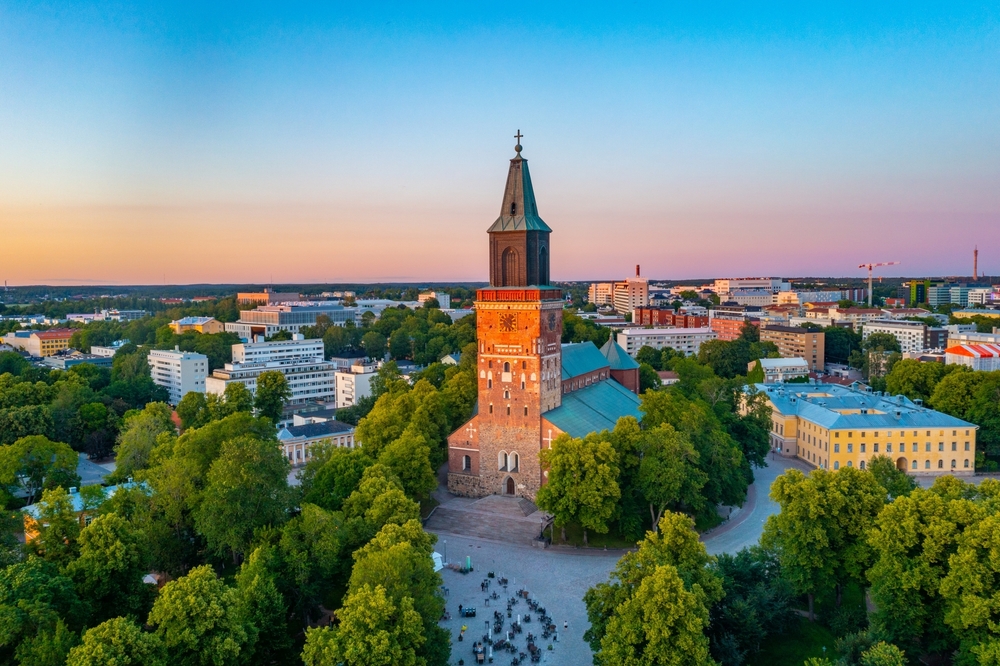
The Finnish coastline stretches out over 50,000 islands and islets along the Baltic coast, forming the largest archipelago in the world. This coastal region of Finland offers unique seascapes, where granite rocks, coniferous forests and crystal-clear waters form unspoilt wilderness settings.
Turku: first capital and gateway to the archipelago
Turku, the former capital of Finland, boasts an exceptional historical heritage on the banks of the River Aura. Turku Castle, a 13th-century medieval fortress, recounts the region’s turbulent history through its exhibition halls and cultural events. Turku Cathedral, built in the same century, remains the spiritual symbol of the country.
The city is the ideal starting point for exploring the Turku archipelago, accessible by ferry or private boat. These crossings reveal a labyrinth of inhabited islands where fishing communities perpetuate age-old traditions. The island villages offer authentic accommodation, restaurants serving freshly caught fish and a variety of water sports.
Åland: an autonomous region with Swedish influences
The Åland archipelago, an autonomous region of Finland, cultivates a unique identity combining Finnish and Swedish influences. Swedish is the only official language, reflecting the complex history of these islands strategically located between Finland and Sweden. Mariehamn, the archipelago’s capital, charms with its linden-lined streets and lively marina.
Åland’s 6,500 islands and islets are ideal for marine activities. Boating, sea kayaking and salmon fishing are the region’s flagship leisure activities. The Ekenäs national park, accessible from the mainland, protects rare island ecosystems that are home to many species of seabird.
Marine activities and island heritage
This coastal region of Finland excels in water sports activities for all levels. The Kotka-Hamina archipelago offers sea kayaking tours between uninhabited islands, while the protected waters are perfect for learning to sail. Fishing enthusiasts will find exceptional conditions here for catching pike, perch and salmon.
The maritime heritage can be discovered in the many historic lighthouses dotting the coast. The Bengtskär lighthouse, at 52 metres the highest in Scandinavia, sits on a rocky islet accessible by excursion. Old fishing villages such as Porvoo, with its colourful houses on the banks of the river Porvoonjoki, bear witness to the centuries-old traditions of this maritime region.
4. Helsinki and the surrounding region: Nordic modernity and Finnish traditions
Helsinki, the dynamic capital of Finland, is the perfect embodiment of the contemporary Nordic spirit. Situated on a peninsula facing the Baltic Sea, the city harmoniously blends neoclassical architecture, modern design and unspoilt green spaces. This metropolitan region is home to a third of Finland’s population, while preserving an exceptional quality of life.
Architecture and landmarks in Helsinki
Download the audio tour to discover Helsinki on foot and on your own
Explore Finland’s capital on our comprehensive 7.2-kilometre itinerary, dotted with 26 must-see places of interest. From the majestic Senate Square to the bustling harbour, via the surprising Temppeliaukio church carved into the rock, our Helsinki audio tour reveals all the secrets of this Nordic metropolis. Discover the fascinating history of Tuomiokirkko Cathedral, stroll through the Design District and soak up the unique atmosphere of the indoor market.
Tuomiokirkko Cathedral towers majestically over Senate Square, embodying Finnish neoclassical architecture. Its five green domes and dazzling white façade make it the symbol of Helsinki, visible from the harbour. The Temppeliaukio church, nicknamed the “church in the rock”, fascinates visitors with its unique design: entirely excavated from granite rock, it offers exceptional acoustics that are highly prized for concerts.
The Design District reveals the creative soul of this region of Finland. This trendy district is home to designer boutiques, contemporary art galleries and craftsmen’s workshops that perpetuate revisited Nordic traditions. The Helsinki Design Museum traces the evolution of Finnish aesthetics, from the Arts and Crafts movement to world-renowned contemporary creations.
Helsinki islands and maritime heritage
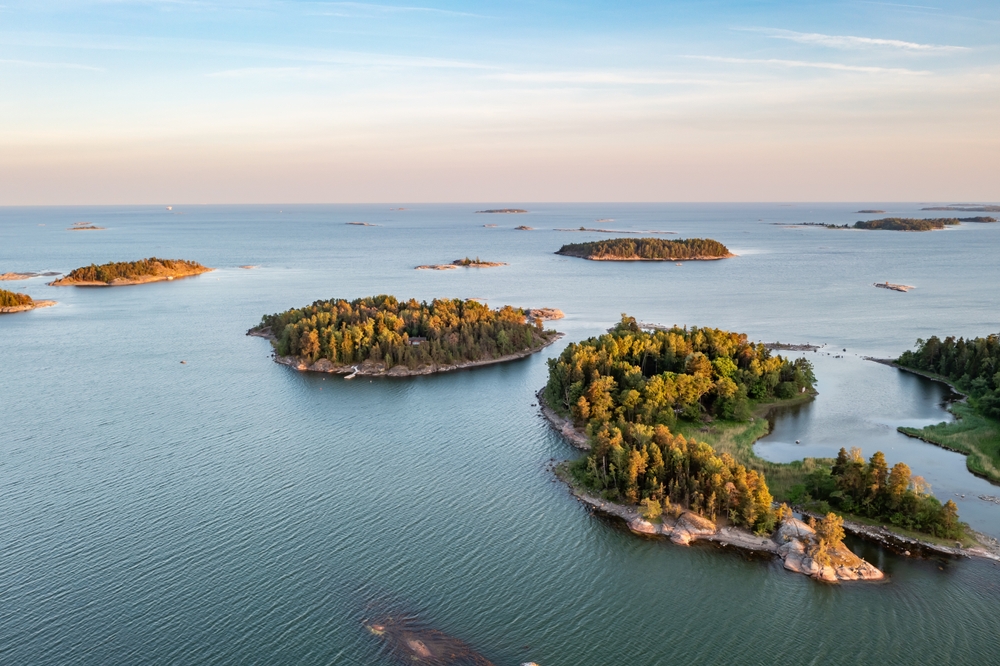
The fortress of Suomenlinna, a UNESCO World Heritage Site, is spread over six islands off the coast of Helsinki. This 18th-century maritime citadel, accessible by ferry from Market Square, bears witness to the strategic importance of this region in Nordic history. Its fortifications, museums and restaurants offer a natural escape just a stone’s throw from the city centre.
The island of Seurasaari is home to an open-air ethnographic museum showcasing traditional Finnish architecture. Farms, churches and windmills recreate the atmosphere of yesteryear in an unspoilt natural setting. The island is also a great place to observe the local wildlife and go hiking on the signposted coastal paths.
Espoo and Vantaa: modern extensions of the capital region
Espoo, Finland’s second largest city, is developing a strong residential and technological identity. The Otaniemi district is home to the Helsinki University of Technology and numerous innovative companies, making Espoo a centre of Nordic excellence. The easily accessible Nuuksio and Sipoo national parks offer unspoilt natural areas on the outskirts of the city.
Vantaa is home to Helsinki-Vantaa International Airport, the main gateway to this region of Finland. The town cultivates a rich cultural heritage around the Aviation Museum and Heureka Science Centre, popular family attractions. Sipoonkorpi Park protects ancient forests and wetlands essential to the region’s biodiversity.
This capital region makes it easy to discover authentic Finnish traditions. Public saunas, such as the Löyly sauna with its breathtaking view over the Baltic, perpetuate age-old wellness rituals. The covered markets offer local specialities and traditional crafts, while the cafés serve the legendary Finnish coffee, an emblematic national drink.
In conclusion, these four regions of Finland make up an exceptionally rich territory where each area reveals unique facets of the Nordic heritage. From mysterious Lapland to wild archipelagos, sparkling lakes and modern Helsinki, Finland offers authentic experiences in unspoilt landscapes. Let our audio tour guide you around Helsinki and discover this fascinating capital, the perfect introduction to the Finnish soul.
Frequently asked questions
When is the best time to discover Finland’s 4 regions?
Summer (June-August) offers the best conditions for exploring all the Finnish regions, with the midnight sun in Lapland and mild temperatures. Winter (December-March) is best suited to Lapland for the Northern Lights and Nordic activities, but limits travel to other regions.
How do you get around the different regions of Finland?
The train remains the most practical way of reaching Helsinki, Tampere and the main towns. For Lapland, we recommend flying from Helsinki to Rovaniemi. Car hire gives you total freedom to explore the lakes region and the archipelago at your own pace.
How long will it take to visit Finland’s 4 regions?
A minimum of one week is enough to discover Helsinki and another region. For a complete overview of Finland’s 4 regions, allow 15 days to 3 weeks, depending on your interests and the season you choose. Lapland and the Lake District each deserve at least 4-5 days.
200 audioguided tours for cities all around the world
Download